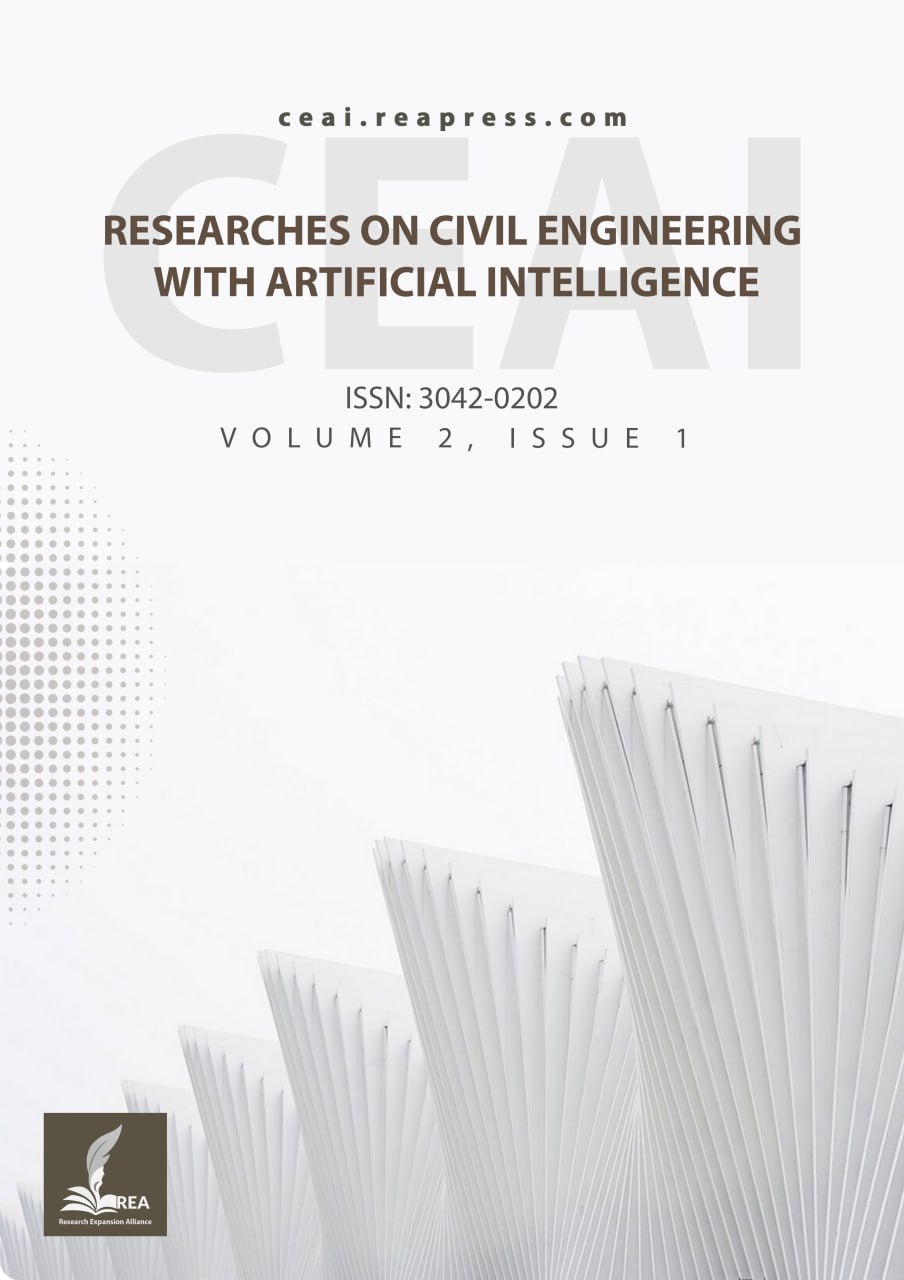Seismic Performance of a Steel Building Braced with Vertical Links in a Rocking Motion System
Abstract
In recent years, greater emphasis has been placed on developing effective means of dissipating seismic energy in structures that keep structural response within the elastic region. In this case, using a link member in divergent bracing components is one of the solutions used in connecting to structures. In the usual process of structural design, the displacement of supports is often ignored, and supports are assumed to be rigid. However, during an earthquake, the structure usually experiences rocking motion, and the assumption of the foundation's rigidity, which is used for analysis and design, is called into question. The method of doing the work is as follows: first, using a selected laboratory sample, the results were validated in SAP software. Next, by modeling a 12-story steel frame system with divergent bracing with a vertical link member without rocking motion and with rocking motion in different cases, the effect of the presence of the vertical link member and the presence of rocking motion has been investigated using nonlinear static analysis to obtain a capacity diagram. In each case, the relevant behavior curves have been presented. According to the results of the nonlinear analysis, it is observed that by using divergent bracing with a vertical link member, we see a 5.2-fold increase in energy absorption compared to the convergent sample, but the presence of rocking motion has reduced the energy absorption of the buildings examined in the study, in a way that has limited this increase in energy absorption to 78 percent.
Keywords:
Vertical links in braced frame (EBF), Rocking motion, Pushover analysis, Finite element methodReferences
- [1] with vertical shear link. Journal of constructional steel research, 137, 262–285. https://doi.org/10.1016/j.jcsr.2017.06.022
- [2] Gioiella, L., Tubaldi, E., Gara, F., Dezi, L., & Dall’Asta, A. (2018). Modal properties and seismic behaviour of buildings equipped with external dissipative pinned rocking braced frames. Engineering structures, 172, 807–819. https://doi.org/10.1016/j.engstruct.2018.06.043
- [3] Eser, M., Aydemir, C., & Ekiz, I. (2011). Effects of soil structure interaction on strength reduction factors. Procedia engineering, 14, 1696–1704. https://doi.org/10.1016/j.proeng.2011.07.213
- [4] Shakib, H., & Atefatdoost, G. R. (2011). Effect of soil-structure interaction on torsional response of asymmetric wall type systems. Procedia engineering, 14, 1729–1736. https://doi.org/10.1016/j.proeng.2011.07.217
- [5] Mylonakis, G., & Gazetas, G. (2000). Seismic soil-structure interaction: Beneficial or detrimental? Journal of earthquake engineering, 4(3), 277–301. https://doi.org/10.1080/13632460009350372
- [6] Okazaki, T., & Engelhardt, M. D. (2007). Cyclic loading behavior of EBF links constructed of ASTM A992 steel. Journal of constructional steel research, 63(6), 751–765. https://doi.org/10.1016/j.jcsr.2006.08.004
- [7] Mohsenian, V., Hajirasouliha, I., & Filizadeh, R. (2021). Seismic reliability analysis of steel moment-resisting frames retrofitted by vertical link elements using combined series--parallel system approach. Bulletin of earthquake engineering, 19(2), 831–862.
- [8] Kim, J., & Choi, H. (2005). Response modification factors of chevron-braced frames. Engineering structures, 27(2), 285–300. https://doi.org/10.1016/j.engstruct.2004.10.009
- [9] Richards, P. W., & Uang, C. M. (2006). Testing protocol for short links in eccentrically braced frames. Journal of structural engineering, 132(8), 1183–1191. https://doi.org/10.1061/(ASCE)0733-9445(2006)132:8(1183)


